Domestic MANPADS: "Needles"
Even during the work on the Strela family, the creators of man-portable air defense missile systems came to the conclusion that the characteristics and capabilities of the systems based on the existing technical solutions are insufficient. MANPADS "Strela-2" and its modifications were not protected from false heat targets, and also had a warhead of insufficient power. In February, the USSR Council of Ministers decree of 1971, according to which the defense industry was to create a new portable anti-aircraft complex, devoid of the shortcomings of its predecessor. The head office of the project was to be the Kolomna Mechanical Engineering Design Bureau, besides the company LOMO, the Research Institute of Measuring Instruments and the Central Design Bureau of Apparatus Engineering were involved in the work.
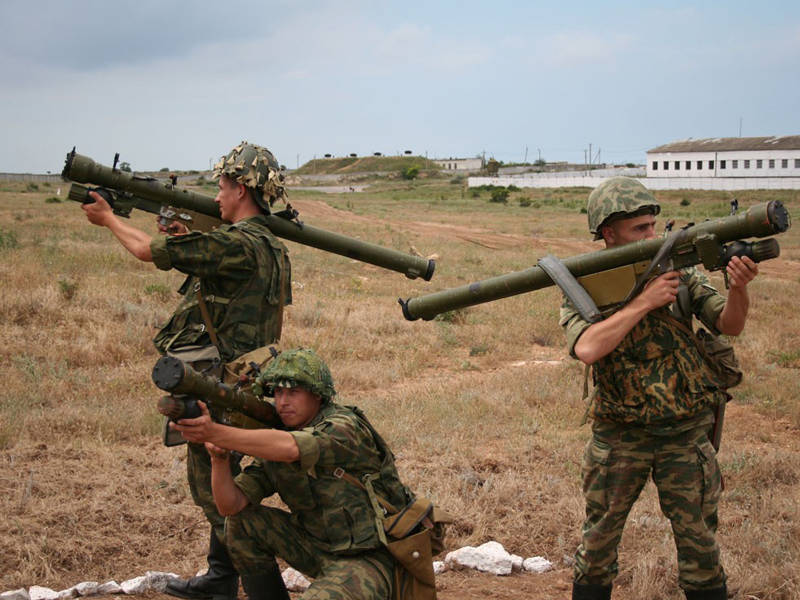
The project, which received the designation “Needle”, was proposed to be created using the existing experience, but without directly borrowing the existing components. It should be noted that the creation of Igla MANPADS proved to be extremely difficult. Initially, it was required to submit a complex for testing at the end of 1973, however, due to the complexity of the project, tests began only in January of 1980.
The basis of the 9K38 “Igla” MANPADS was the 9М39 guided missile equipped with a specially designed homing head. The two-channel infrared GOS 9E140 was created with a view to improving noise immunity and improving the characteristics of the complex. The head of the rocket 9М39 was equipped with two photodetectors. The photodetector of the main channel in working condition was cooled to -200 °. The maximum sensitivity of the main photodetector was achieved in the 3,5-5 μm range and corresponded to the spectral density of the gases of the turbojet engines. The uncooled photodetector of the additional channel had a maximum sensitivity in the 1,8-3 μm range and was intended to detect false thermal targets. The automatics of the 9EXNXX seeker determined the targets and interferences by comparing the signal level from two receivers. If the stronger signal came from the photodetector of the additional channel, then the target was determined as false. Otherwise, the rocket continued aiming at the target.
To increase the probability of hitting the target, the GOS 9E140 received an additional scheme, which is responsible for turning the missile toward the target in the initial part of the flight. To perform such a turn in the steering compartment of the rocket, additional solid-fuel engines were provided.
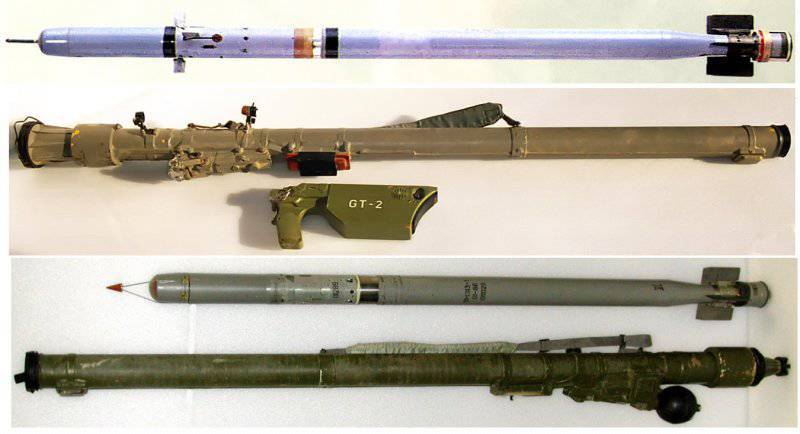
Above the rocket MANPADS "Needle", its launch tube and control handle. At the bottom of the elements of MANPADS "Igla-1" - a rocket and launch tube
The 9М39 rocket had a length of 1574 mm and a case diameter of 72 mm. The starting weight of the product was 10,6 kg. To improve the aerodynamic characteristics on the hemispherical head fairing of the rocket a thin “needle” was provided. The layout of the internal volume of the rocket was the same as that of the previous ammunition of domestic MANPADS. At the head of the product was placed the GOS, followed by the steering compartment with the control equipment. Behind the steering compartment there was a warhead and a solid fuel engine. In the tail of the rocket mounted folding stabilizers. In order to save space in the folded state, they were located not behind the tail end of the rocket, but on its side surface.
The mass of the high-explosive fragmentation warhead of the 9М39 rocket was 1,17 kg. Having the same weight as the combat units of the Strela missiles, the combat unit of the 9М39 rocket carried a more powerful explosive. The warhead had two fuses: induction, triggered when approaching a metal target, and pin. In addition, there was an explosive generator, designed to undermine the remaining fuel in the engine.
The Igla MANPADS missile could fly to the target at speeds up to 600 m / s. The maximum firing range (in pursuit) reached 5,2 km, the maximum height (also in pursuit) - up to 2,5 km. When firing in pursuit of the 9M39 rocket could hit a target flying at speeds up to 320 m / s. The target speed when shooting towards reached 360 m / s. The probability of hitting a target with one rocket reached 0,63.
In addition to the rocket, the 9K38 “Needle” portable anti-aircraft complex included a launch tube 9П39, a trigger mechanism 9П516 and a portable electronic tablet. In terms of composition and function, the 9P516 trigger was largely similar to previous devices of this type, but it was equipped with the 1Л14 integrated ground-based radar interrogator. The principle of operation of the trigger remains the same. In a combat position, the Igla MANPADS weighed 17 kg.
An interesting feature of the Igla complex was the use of the 1L110 tablet. Using this device, the wired commander could transmit information to the anti-aircraft gunners on the detected targets. Using the tablet made it possible to simplify and speed up the process of finding and capturing targets.
The creation of electronic components of MANPADS 9K38 was delayed, because of which its state tests were carried out not in the mid-seventies, as planned earlier, but only in 1982 year. Nevertheless, the developers of the project managed to correct all the shortcomings, thanks to which the Igla complex successfully passed the tests and was adopted in September 1983.
In the future, the basic version of Igla MANPADS became the basis for several modifications. So, for the airborne troops was developed option "Igla-D". The launch tube and the missile of this MANPADS for transportation could be divided into two parts of relatively short length. For the armament of helicopters and ground equipment, a modification of the “Igla-V” was created. It differs from the basic “Needle” by a trigger mechanism, which allows the simultaneous use of two launch tubes with missiles. The Igla-N complex received a missile with a more powerful warhead, which made it possible to increase the probability of hitting the target by 25-50 percent. Because of the installation of a new warhead, the Igla-N MANPADS rocket was heavy on the 2,5 kg, which affected its flight characteristics. Thus, the maximum target speed on follow-up courses decreased to 280 m / s, on the opposite speeds - to 320 m / s.
"Needle-1"
As already mentioned, the creation of the homing head 9E140 turned out to be a difficult task, the solution of which took longer than originally planned. In this regard, in 1978, there was a proposal to create a new MANPADS. In parallel with the “Igla” system, it was proposed to develop a similar “Igla-1” complex, the design of which would not use complex systems, the creation of which was delayed. MANPADS "Igla-1" was not intended to replace the "Needles", but had to complement it, as well as simplify the process of re-equipping troops.
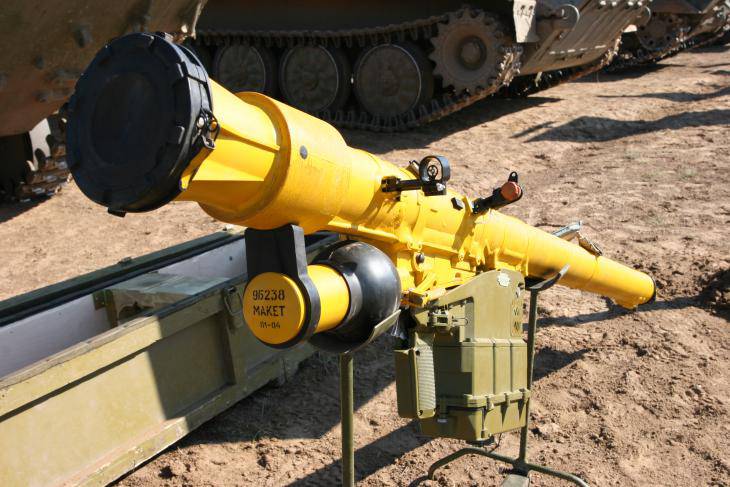
By 1978, all the main work on the “Needle” project, with the exception of the creation of the GOS, was completed. For this reason, it was decided to use the Needle-based groundwork for the new Igla-1 MANPADS, and to use the modified Strela-3 system as the homing head. In this way it was assumed in a relatively short time to create a portable anti-aircraft complex with acceptable characteristics.
Most of the design elements of the 9М313 rocket of the 9K310 “Igla-1” complex were borrowed from the “Igla” project. The launch tube 9P322 and the trigger mechanism 9П519 with the radar interrogator 1Л14 were also created on the basis of the existing groundwork for the main project.
The 9М313 rocket with a length of 1673 mm and a diameter of 72 mm had a starting weight of 10,8 kg. The product used an infrared homing head, which was a modified GOS missile complex "Strela-3". To improve the rocket aerodynamics, a special conical part was installed in front of its head fairing. Additional fairing was attached to three rods and had to reduce the drag of the rocket. The shape of the fairing, which is different from the “needle” of the 9K38 complex, was due to the use of a single-channel GOS with one photodetector. In the transport position, the conical fairing protruding from the forward cut of the launch tube was covered with a cover of the appropriate shape.
The warhead of the 9М313 rocket was borrowed from the 9М39 product. She had a total weight of 1,17 kg and was equipped with an explosive charge, as well as an explosive generator to explode the fuel in the engine. For the work of the warhead was responsible two fuses.
The characteristics of the GOS of the 9М313 rocket made it possible to capture the target when shooting at a distance of up to 5 km. The maximum possible altitude of the attacked target is 2,5 km. With its own speed up to 600 m / s, the Igla-1 rocket launcher could hit targets flying at speeds up to 360 m / s (in pursuit) or 320 m / s (opposite). The probability of hitting a fighter-type target with a single missile, depending on the conditions, reached 0,59.
For the convenience of anti-aircraft gunners, the squad leader could use the electronic tablet 1Л15-1. This unit allowed the commander to receive information from the divisions-regiment air defense command posts and monitor the territory of 25x25 kilometers. The 1Л15-1 tablet could simultaneously provide information on four targets, indicating their location, course, and other parameters.
Creation of MANPADS 9K310 "Needle-1" was completed relatively quickly. In early January, 1980, the first test launches of new missiles for training purposes were conducted. Trials continued until mid-summer of the same year. 11 March 1981 was issued by the CPSU Central Committee and the USSR Council of Ministers decision to adopt the new complex.
Igla-S
The most recent modification of the Igla MANPADS is the 9K338 “Igla-S” system, which was put into service at the beginning of the two thousandth years. The aim of this modernization was to improve the characteristics of the base complex, as well as expand its capabilities. As planned by the authors of the project, the Igla-S complex was supposed to fight not only with enemy aircraft or helicopters, but also with cruise missiles. The development of the MANPADS was carried out by the machine-building design bureau and the LOMO enterprise. Serial production was deployed at the Plant. Degtyarev (Kovrov).
For the new portable anti-aircraft complex was developed rocket 9М342, which is a deep modernization of the base 9М313. In the previous dimensions (length 1635 mm and diameter 72 mm) with a slight increase in weight (11,7 kg), it was possible to place new electronic equipment and a warhead designed to improve product performance. The new infrared hsn 9E345 is built on a two-channel scheme and is able to determine false thermal targets. An interesting innovation is the updated algorithms of the GOS. T.N. the displacement scheme when approaching the target redirects the rocket from the engine nozzle to the center of the fuselage. In this way, the probability of hitting the most important and vulnerable units of the enemy’s aircraft or helicopter increases.
The warhead of the 9М342 rocket is equipped with a non-contact target sensor that works in conjunction with a contact fuse. According to reports, the proximity fuze is triggered with some delay after approaching the target. This allows the rocket to fly some distance and hit the target (in this case, the contact fuse is triggered) or explode near its fuselage. All these innovations significantly increase the likelihood of a reliable defeat of the target. The total weight of the warhead is 2,5 kg. In addition, the fuel solid engine can detonate with the explosion of the warhead, increasing its effect.
The homing head 9E345 allows you to hit targets at distances up to 6 kilometers. The maximum flight altitude of the target is 3,5 km. The 9М342 rocket can catch and hit a target flying at speeds up to 340 m / s. When attacking on a collision course, the maximum target speed is limited to 400 m / s.
The Igla-S MANPADS missile is supplied in the 9P338 launch tube with the 9B238-1 ground source power supply. The pipe is mounted trigger 9P522, which is a further development of devices of this type. If necessary, the anti-aircraft gunner can use the 1PN72M Mowgli night vision sight. MANPADS 9K338 in a combat position weighs 19 kg.
It should be noted that for the use of the Igla-S complex, a set of night shooting equipment (COCH) 9C250 was created. The kit includes a portable electronic kit with communication and information processing equipment, support devices (tripods with mounts for MANPADS and target designation equipment), target designation equipment for shooters and a set of means for storing and transporting set elements. The commander of the anti-aircraft gunnery unit using a tablet from the COCH 9C250 can receive information about the air situation from the air defense command posts. The tablet can recalculate the data and transmit information about the azimuth and distance to the targets to the anti-aircraft gunners. Data transmission from the commander's tablet to the shooters' equipment is carried out via a wired channel.
State tests MANPADS 9K338 "Igla-S" ended at the end of 2001 year. Soon the complex was adopted by the Russian army. Since then, the defense industry has created several types of additional equipment compatible with Iglo-S. Thus, with the 2009 of the year, the Barnaul set of COCH 9C935 is in service with higher characteristics in comparison with 9C250. The Igla-S MANPADS can be used together with the Dzhigit main launcher, which is a rotating base for two launch tubes with equipment. For the installation of MANPADS for various vehicles are offered complexes "Strelets" and "Komar".
Man-portable Igla anti-aircraft missile systems were actively used and used by the Soviet and then the Russian armed forces. A large number of such MANPADS was sold to third countries. In total, the Igla family of systems is in service with almost four dozen countries. The combat use of Igla-1 MANPADS began in the 1991 year, during the Gulf War. Man-portable air defense systems were actively used by Iraqi troops. Several International Coalition planes were shot down or damaged. After that, the “Needles” were used in almost all major armed conflicts of recent times.
Based on:
http://pvo.guns.ru/
http://rbase.new-factoria.ru/
http://kbm.ru/
http://rusarmy.com/
Vasilin N.Ya., Gurinovich A.L. Anti-aircraft missile systems. - Minsk: Popurri LLC, 2002
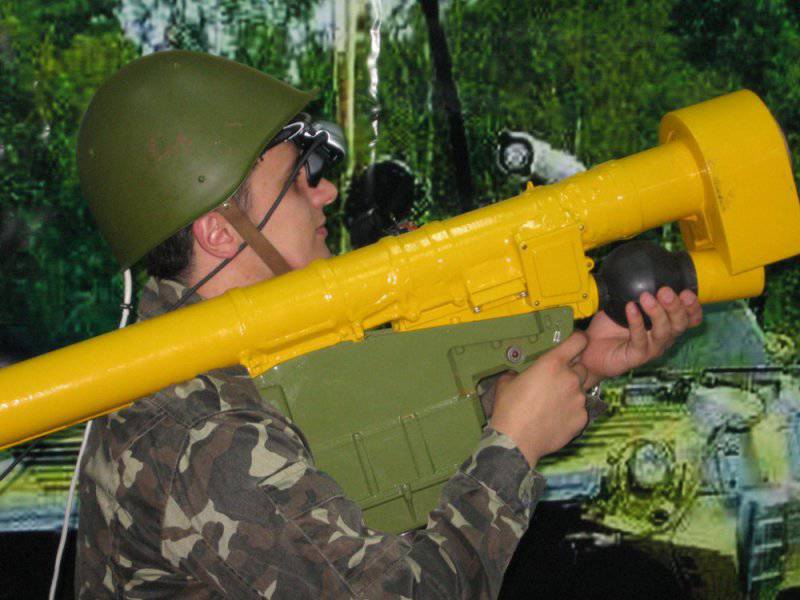
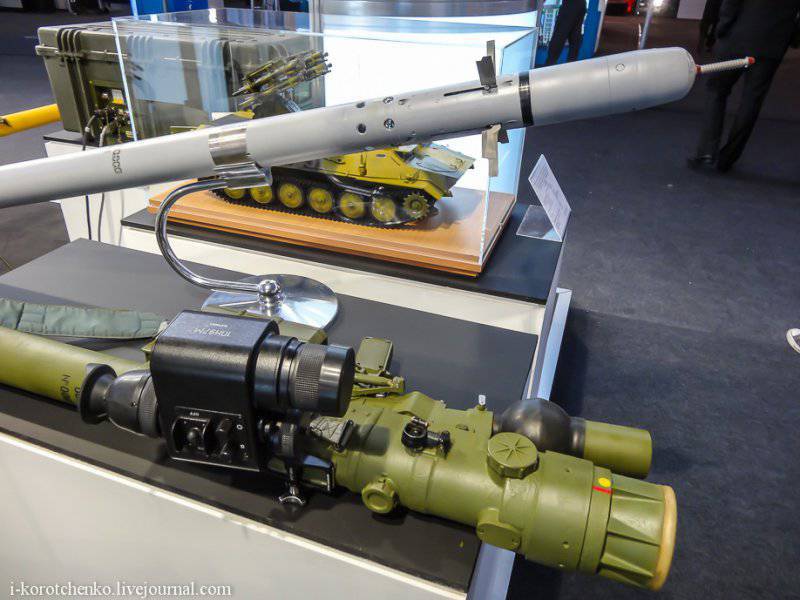
Information